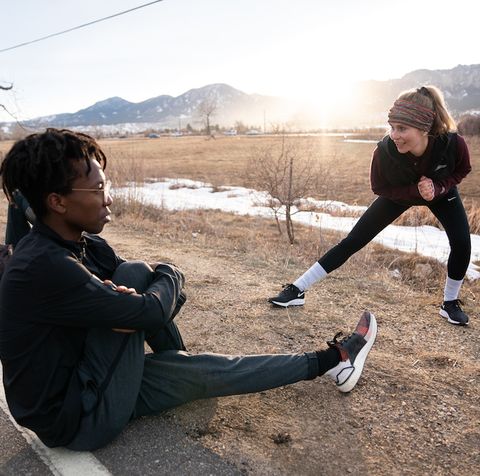If you’re embarking on a fitness plan filled with nothing but road and treadmill workouts, you’re ultimately setting yourself up for failure. You’ll have your cardiovascular health and conditioning covered, sure—but if you really want to perform to your full potential and have that top gear to pull away in the toughest races, you’ll need to be strong, too.
If you don’t have a strength component in your routine, it’s important to add one to push even further in your training. But the gym can be a scary, unfamiliar place.
Trainer Charlee Atkins, C.S.C.S., understands that runners might need some guidance to understand exactly what type of training they should be doing for sport-specific results. Atkins created this simple four-move series that targets the lower body unilaterally, which means you’ll be working on one leg at a time.
[The best runners don’t just run, they hit the gym. The Beginner’s Guide to Strength Training Feb 7, 2020.]
“The goal of the series is to help balance out the sagittal [front-to-back and up-and-down] motion of the sport, but to also strengthen the muscles that power runners,” she says.
To perform the series, you’ll need a dumbbell and some space to move around. If you’re just starting out, master the movements without the weight before you add a load, then progress from there.
Perform each exercise for 12 to 15 reps before moving to the next, resting as needed. Complete the full series for three to four rounds total.
- Single-Leg Bridge
- Reverse Lunge
- Lateral Squat
- Kickstand Deadlift
While you might be more familiar with forward lunges—and you might feel like you should be focused on moving forward, since you’re a runner—Atkins programmed you to be moving backward for a reason.
“I chose the backward lunge over the front because under heavy load it’s safer for the knee and a lot easier to execute,” she says.
From: Men's Health US
















